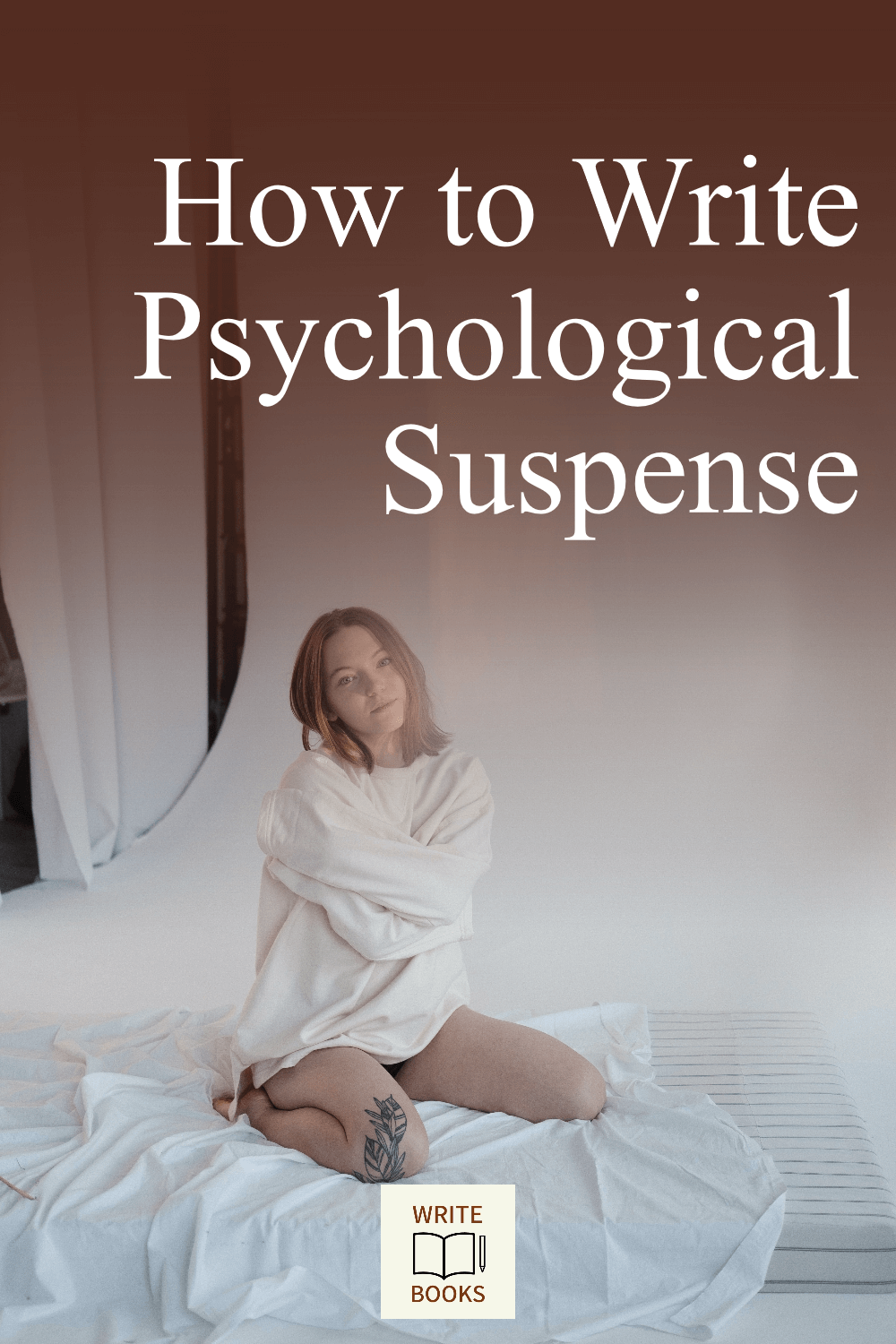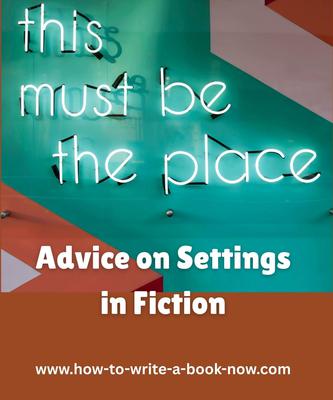How to Write a Psychological Suspense Story
By Glen C. Strathy
To write a psychological suspense story or novel effectively, it is important to appreciate the essence of what makes this genre appealing to its readers. While sharing some traits with horror, suspense, mystery, and thriller stories, psychological suspense stories also feature some key differences and narrative requirements.
So let's look at what sets psychological suspense apart from other genres and what you need to know to write a psychological suspense novel.
Psychological Suspense is an Intellect Genre
All good stories take the reader on an intellectual and emotional journey. Different genres offer different types of journeys.
Psychological suspense falls into the category of "intellect" genres because it gives readers a particular brand of intellectual stimulation in the form of a puzzle to solve. Wrestling with the puzzle is a source of much fun for readers of this genre.
In this regard, psychological
suspense bears some resemblance to mystery. However, while a murder mystery concerns an external puzzle -- figuring out who committed a murder
-- psychological suspense offers readers an internal puzzle. They must try to figure out how much of what seems to happen in the story is
real, and how much is the product of a character's deranged imagination.
The Psychological Element
Psychological suspense stories are about characters whose mental state is teetering on the edge. They may be experiencing intense emotions such as anger, guilt, or self-loathing. They be suffering from drug reactions, obsessions, paranoia, nervous breakdowns, schizophrenia, or other types of mental illness. They may be gaslighted or manipulated by other characters into doubting their own perceptions. Their grip on reality or their sense of their own identity may be slipping.
Readers of psychological suspense stories find themselves in a position similar to that of a psychiatrist listening to a patient and trying to figure out how much of their story is accurate and how much is the product of delusion. They enjoy the challenge of deducing what is really happening in the story.
When you write a psychological suspense story, you should create a challenging puzzle for the readers to wrestle with. Don't show overtly what is going on. Obscure the reality behind the story events, so that your readers must to read carefully, weigh up subtle clues, and analyze the main character's thoughts and perceptions. You don't want to make the puzzle easy to solve, because that's no fun. Nor do you want to make the puzzle so difficult that the readers feel it's not worthwhile trying to solve it. Tease your readers so they feel they can almost solve the puzzle, but not quite.
Tip #1: To Write a Psychological Suspense Story, Use a Limited Narrative Mode
You will almost certainly write a psychological suspense story using a limited narrative mode. You can write either in first person or third person, but you must confine the story to the main character's point of view. With first person narration, the main character will be telling their story to the reader, or themselves, or some other entity. With third person narration, the narrator will be telling the story from the main character's perspective. Either way, the reader only learns what the main character thinks, feels, and perceives.
Limited narration prevents the readers from seeing the events of the story objectively or gaining information about the story world other than what the main character perceives or chooses to tell them. And since the main character is suffering from some degree of delusion, much of what the readers learn will be false.
This is how you create the puzzle. The reader must try to figure out which of the main character's perceptions are false and which are true. If the character is going mad, at what point is their grip on reality lost?
You can sometimes switch to other point-of-view characters for brief passages in your story. But when you do this, you generally don't want such passages to give readers the solution to the puzzle. Don't let them discover which of the main character's perceptions are false, because that would spoil the fun. If anything, such passages should introduce information that makes the reality of the story even less clear.
Tip #2: Keep the Readers Guessing, Even After They Finish the Story
Along those lines, psychological suspense stories often do not reveal the solution to the puzzle, not even at the end of the story. Instead, they leave the reader forever uncertain what happened -- which parts of the story were true and which were illusions. That's just part of the fun. The readers can enjoy continuing to ponder the story long after they have read it, trying to weigh up the evidence and look for false statements. They may re-read the story many times, looking for more clues that will help them solve the puzzle. But they can never find definitive proof. The best they can hope for is to find a solution that seems more likely than not.
On the other hand, you may write a psychological suspense story in which the main character turns out to have been completely rational the whole time. The strange events may be an orchestrated attempt by a villain who is trying to make the main character doubt their sanity. You may choose to end the story with the villain's plan exposed and the main character reassured that all the strange things they perceived have a rational explanation.
But even with this type of ending, it can be fun to leave one question unanswered -- one strange thing the main character perceived that cannot be explained -- one small hint that perhaps the main character did go a little mad.
Tip #3: Use an Unreliable Narrator
It follows that, if you write a psychological suspense story in first person, you should probably use an "unreliable narrator."
An unreliable narrator is one the reader cannot trust to convey accurate information about the events of the story. An unreliable narrator may exaggerate, misperceive events, or deliberately lie. Their emotions may blind them to the truth or distort it. They may experience delusions or hallucinations.
Of course, you may want to make the main character seem rational at first, to win the reader's trust. But as the story progresses, the main character may appear to grow increasingly delusional until it's obvious they have gone insane. Readers often have fun trying to pinpoint the exact moment where the main character starts to lose touch with reality, or the first sign that something weird is going on.
Tip #4: Mess With the Flow of Time
 Psychological Suspense often uses fractured timelines to reflect the fractured mind of the protagonist.
Psychological Suspense often uses fractured timelines to reflect the fractured mind of the protagonist.To reflect the disintegration of the main character's psyche, you may choose not to tell the story in chronological order. Instead, you can use many flashbacks or flashforwards to disrupt the reader's sense of what is actually the present and how the story unfolds over time. This reflects how someone's memory of a trauma will often have a distorted or jumbled sense of how events happened chronologically. You may withhold certain aspects of the past until later in the story -- perhaps things the main character is reluctant to acknowledge.
You may return to a key event more than once, each time telling it from the perspective of a different character. Naturally, different characters will remember or perceive the event differently. This forces the reader to figure out who's account of the event is more accurate -- and how inaccurate the main character's perception is. The readers are thus given a difficult puzzle to solve. They must figure out for themselves how the events of the story actually unfolded chronologically, what the cause-and-effect relationships among events are, what is real, and who is deliberately deceptive or unintentionally delusional.
The Element of Suspense
The second key ingredient of a psychological suspense story is suspense.
Suspense is a distinct genre on its own. The core trait of a suspense story is that it features a threat to the main character which the main character is oblivious to until the crisis. Either they are being stalked by a villain or they are walking into a trap the villain is preparing. Often the reader sees the threat long before the main character does. The reader is held in suspense, waiting to see what will happen when the trap is finally sprung.
When you write a psychological suspense story, you will create a threat to your main character. But unlike a typical suspense story, your main character may perceive the threat much earlier in the plot. Throughout the story, the main character may grow increasingly anxious as they encounter more signs the threat is approaching. However, the reader will be uncertain whether the threat is real or simply a product of the main character's delusion.
In other words, there may be two potential threats:
1. The main character could be delusional to the point where they are perceiving a threat where none exists. In that case, the real threat is that the main character is going insane. Most readers find the thought of going insane quite scary and will empathize with a main character in such a situation.
2. The main character could be completely rational. In this case, the threat is exactly what the main character thinks it is. They are either being stalked or a trap is being set for them.
A good psychological suspense story may involve an element of both. There could be a real external threat. However, the main character misperceive or only partly perceive its true nature. She may be wrong about who the villain is. She may think the threat is supernatural when it is completely human (or vice versa). In any case, the reader must be held in suspense, uncertain how accurate the main character's perceptions are.
Tip #5: Make the Main Character Perceive a Threat
When you sit down to write a psychological suspense story, you must create a threat that the main character will perceive, one that will become more frightening as the story progresses.
It's a good idea to make the threat something that only the main character perceives and other characters do not. This raises questions in the reader's mind, such as: "Is the threat real, or is the main character delusional? Or are the other characters in on some plan to drive the main character mad?"
Let me give you a couple of examples...
In the TV series, Star Trek: The Next Generation, there is an episode called "Remember Me." In it, the ship's doctor, Beverly Crusher, greets an old friend who arrives on board just before the ship leaves port. Soon after, her friend disappears. Worse, Dr. Crusher discovers that no one on the ship remembers her friend having been on the ship at all. So the viewer must wonder: "Did the friend leave the ship somehow? Did Dr. Crusher just imagine her friend was there? Or is some conspiracy taking place?" (The episode was doubtless inspired by the 1938 film, The Lady Vanishes.)
As the story progresses, other people start disappearing, including crew members the viewer is familiar with. Yet only Dr. Crusher notices the people are missing. Everyone else has no memory that the disappeared people were ever on the ship in the first place. The disappearances escalate to an absurd level, until it is obvious the ship could not function with so few people on board. Yet the remaining crew members remain unconvinced that the missing people ever existed. The events are so strange that the viewer is forced to wonder if Dr. Crusher has gone mad, and the events of the story are all part of her delusion, or if some unknown sinister force is at work that seems to defy the laws of the universe.
Another example is the classic short story "The Yellow Wallpaper" by Charlotte Perkins Gilman. In this story, a woman is confined to a room by her husband (a physician) as a "rest cure," a common treatment at the time for nervous exhaustion. The room is supposed to have once been a nursery, but clues suggest it has actually been designed to house someone suffering from mental illness. And indeed, over the course of the story the main character, who seems rational in the beginning, starts to experience strange hallucinations concerning the wallpaper in her room. The suspense in the story comes from the reader's increasing concern whether some supernatural threat is at work or if the main character is going mad.
The Element of Fear
Although psychological suspense is an intellect genre, we cannot forget that emotions play a role. In particular, you want to put your main character in a situation where they feel anxiety and fear, perhaps even paranoia. Your reader should experience the same feelings as they empathize with your main character.
Tip #6: Set Psychological Suspense Stories in Familiar Settings
One common technique for creating fear is to take something readers feel secure about and turn it into a threat. For this reason, psychological suspense stories usually take place in a fairly ordinary setting -- a place the reader and the character associates with safety.
Other genres give readers the experience of exploring an unfamiliar setting, such as a foreign country or a fantasy world. But such settings are usually less effective in psychological suspense because readers expect an exotic setting to contain unexpected threats.
For example, you may set a story on an alien planet, where the main character is being stalked by a monster. However, the main character's sanity is less likely to be questioned in that situation. Strange events would be perfectly in keeping with a strange setting. The reader may feel it's reasonable for an alien planet to be home to monsters.
On the other hand, if you write a psychological suspense story that take place in a familiar setting, the main character and the reader will not expect anything out of the ordinary to occur. So when the main character starts to notice small, strange things happening, these events will be disconcerting. The reader will wonder if the main character is imagining them. As you continue to make strange things happen, you create anxiety in the reader's mind as they struggle to resolve the puzzle over what is real and what is false.
Note that there is another genre that combines exotic settings with suspense called romantic suspense. However as with the example above, the main character in a romantic suspense will usually be quite sane but threatened by diabolical forces that are in keeping with the strange setting.
Subgenres: Psychological Thriller, Psychological Horror, Psychological Mystery
We should note that people will sometimes refer to psychological suspense stories as psychological thriller, psychological horror, or even psychological mystery. Psychological suspense stories often get lumped in with other genres, especially when they contain elements of those genres. For instance, if a murder mystery has a psychological element, it may get labelled "psychological mystery" and placed in the mystery section.
Along this line, you might write a psychological mystery in which a main character, who is suffering from mental health issues, witnesses something that incriminates a murderer. But did they actually see it, or just imagine it? Meanwhile, as the main character searches for proof of what she saw, she may be stalked by the murderer, who intends to silence her.
A story might get labelled "psychological horror" if the main character feels stalked by a supernatural threat. For instance, if they think they are being haunted by a ghost or pursued by some demonic force. Psychological horror differs from pure horror in that pure horror is about genuine supernatural threats, whereas in psychological horror it will be unclear whether the supernatural threat is real or imagined.
Psychological thriller combines a thriller story with psychological suspense. For instance, the main character may find himself in a lot of fast-paced, dangerous situations he must use his wits to escape. At the same time, there may be growing hints that all is not as it seems. Perhaps the main character is suffering from paranoia that is causing him to behave irrationally. The reader must decide if the main threat is genuine, imaginary, or a bit of both.
All these combinations may be considered subgenres of psychological suspense.
Stories to familiarize yourself with before you write a psychological suspense...
Before you try to write psychological suspense stories, you should be somewhat familiar with the genre. In case you are not, I've listed some (mostly) classic psychological suspense stories below that you may wish to start with. (Note that, as an Amazon Associate, this site earns if you purchase books or movies after clicking links on this page.)
Short Stories
"The Telltale Heart" by Edgar Allen Poe
A murder's guilt causes him to suffer auditory hallucinations. |
"The Yellow Wallpaper" by Charlotte Perkins Gilman
A woman confined to a room due to nervous exhaustion begins to see something moving inside the wallpaper. |
"The Turn of the Screw"
|
Novels
Strangers on a Train by Patricia Highsmith
A man is driven to commit murder by a stranger. |
Rosemary's Baby by I. Levin
A young wife comes to believe she is being used by a Satanic cult. |
The Girl on the Train by Paula Hawkins
A woman believes she has witnessed a murder -- or is it a delusion caused by her obsession with her ex-husband? |
Movies
Insomnia
A policeman's guilt over shooting his partner opens him to manipulation by a psychopath. |
Gaslight
A woman's husband tries to convince her she is insane so he can steal from her. |
Suspicion
A woman starts to suspect her husband is a murderer. |


































